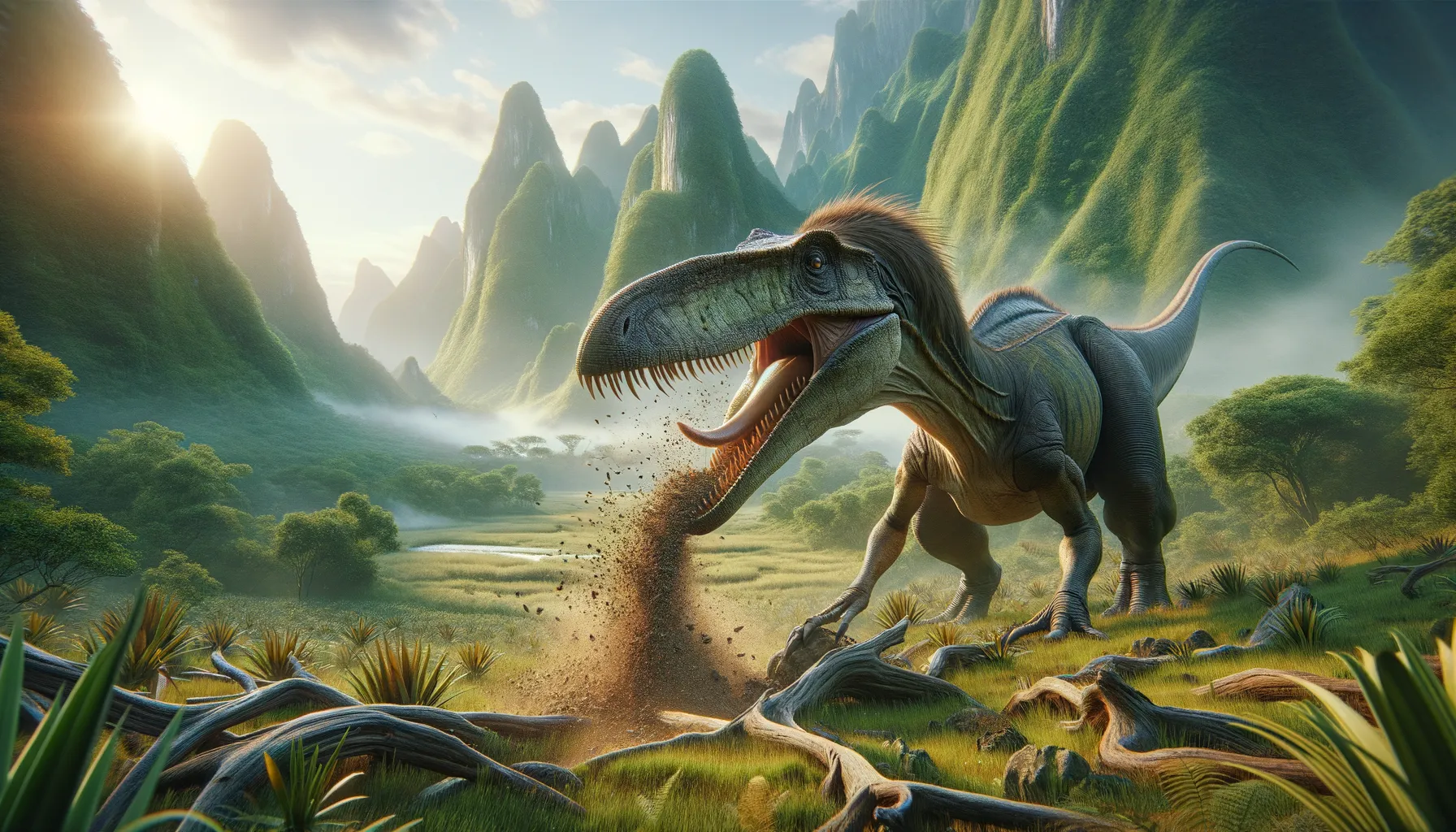
Plesiohadros
Graceful grazer of the ancient Cretaceous past.
Period
Cretaceous
Length
Close to 9 meters long.
Height
Approximately 4 meters at the shoulder.
Weight
Roughly 3.5 tonnes.
The Plesiohadros was a herbivorous dinosaur recognized for its large size and duck-billed appearance. Residing in the lush landscapes of the Late Cretaceous, it roamed the regions that constitute modern northeastern Asia. As one of the last non-avian dinosaurs before the mass extinction, this creature was equipped with a complex dental battery, allowing it to grind tough plant materials efficiently. Fossils provide us with insight into its adaptability and the rich biodiversity of its habitat.
Diet
Plesiohadros was primarily a herbivore. It fed on a variety of plant materials available in its habitat, using its specialized teeth to grind tough foliage. Its diet likely consisted of conifers, ferns, and flowering plants.
Hunting
As a herbivore, Plesiohadros did not hunt other animals. Its feeding strategy involved foraging for plants. It used its strong beak to clip vegetation before grinding them with its dental batteries.
Environmental challenges
Plesiohadros faced challenges from predators such as the tyrannosaurs that roamed its environment. Climate shifts during the Cretaceous period would have influenced the availability of vegetation. The dinosaur needed to adapt to changes in its habitat and ensure it had enough food to sustain its large size. Natural disasters like volcanic eruptions also posed threats to its way of life.
Speed
Moderate, not built for fast escapes.
Lifespan
Around 20 to 30 years in the wild.
First discovery
Unearthed in 2014 in northeastern China.
Fun Facts
- Plesiohadros is a relatively recently discovered dinosaur, first introduced to the world in 2020.
- This dinosaur lived during the Late Cretaceous period, around 66 million years ago.
- Plesiohadros is believed to have been a herbivore, meaning it fed on plants.
- The name 'Plesiohadros' means 'near Hadrosaur', referencing its similarity to another group of duck-billed dinosaurs.
- Fossils of Plesiohadros were found in what is now eastern Spain.
- Plesiohadros is thought to have had a large, flat beak useful for cropping vegetation.
- This dinosaur helps paleontologists learn more about the diverse ecosystem of Europe during the end of the dinosaur era.
Growth and Development
Plesiohadros grew from a small hatchling into a massive adult over several years. Its bones show signs of rapid growth during juvenile stages, which eventually slowed as it matured. Like other dinosaurs of its type, it likely went through distinct growth phases, each demanding increased nutrient intake. Fossil studies suggest that they reached near adult size relatively quickly to avoid predation.
Habitat
This dinosaur lived in what is now northeastern Asia, an area rich in plant life. Its environment featured dense forests and open plains, perfect for grazing. Freshwater sources were abundant, supporting a diverse ecosystem. Seasonal variations would have affected the types of plants available year-round.
Interaction with other species
Plesiohadros coexisted with a variety of other dinosaurs and prehistoric creatures. Its primary interactions were likely with other herbivores competing for food resources. Predatory dinosaur species were a constant threat, influencing its social behaviors. It may have formed herds for protection against these predators.
Natural lifespan
In optimal conditions, it could live for up to 30 years.
Reproduction
Plesiohadros likely laid eggs in nests, as evidenced by related species. The young were precocial, meaning they were relatively mature and mobile from birth. Parental care might have been present to some extent, guarding nests and assisting young in their early life stages. It is hypothesized that reproductive strategies evolved to maximize offspring survival in a predation-rich environment.
Social behaviour
Plesiohadros may have displayed social behaviors common in other dinosaur species, such as forming herds. Herding would have provided protection from predators and enabled efficient foraging. It possibly communicated with others through vocalizations or displays. Social structures might have included dominant individuals leading groups.
Fossil locations
Plesiohadros fossils have been primarily found in northeastern China. These discoveries have provided crucial insights into dinosaur biodiversity in the region during the Cretaceous. The sites have yielded well-preserved remains, allowing researchers to study its anatomy in detail. Such finds continue to enhance our understanding of the ecosystems in which it thrived.
